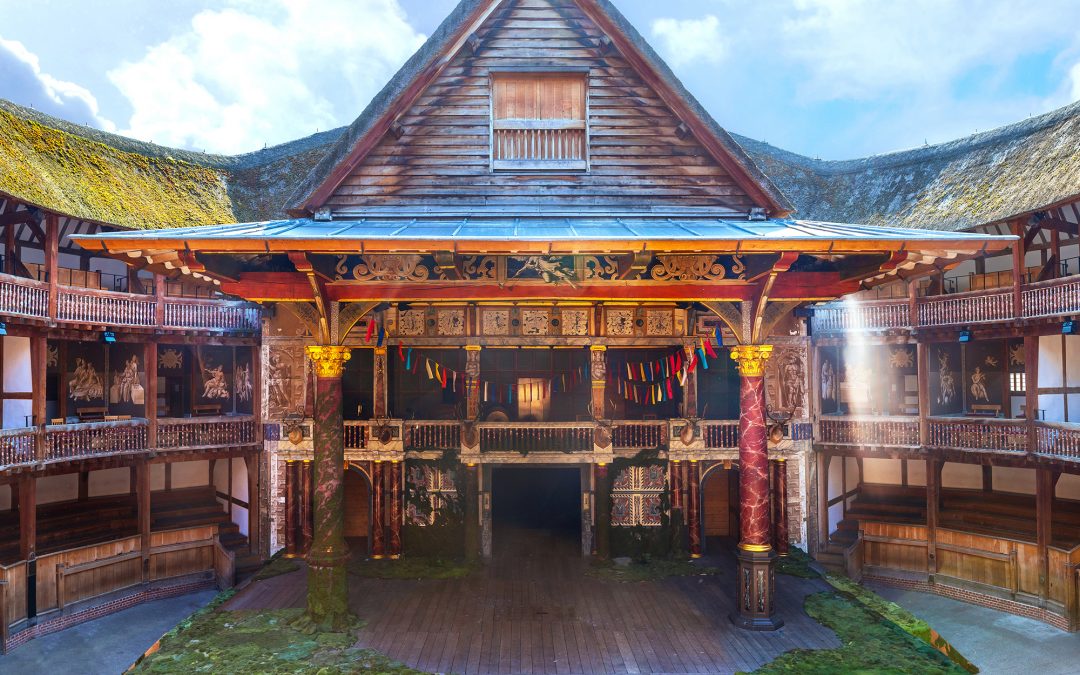The Globe Theatre in London was William Shakespeare’s creative home for much of his illustrious career as a playwright. Plans for The Globe began with a land dispute between Shakespeare’s acting company, Lord Chamberlain’s Men, and their landlord. The acting company originally performed almost exclusively in The Theatre, but a problem with the lease motivated the playwright and his actors to build and operate their own venue. After some trickery that included taking apart The Theatre and sneaking the building materials across the River Thames, Shakespeare and his colleagues succeeded in securing a lease on the original site. They reassembled The Theatre, renamed it The Globe, and proceeded to write and perform some of the most famous plays in history.
The Globe opened in 1599, with Shakespeare and his lead actor, Richard Burbage, as main shareholders. The first performance was of Shakespeare’s historical epic, Julius Caesar. The theatre was built on a brick foundation with a heavy timber frame, walls of plaster mixed with cow hair, and a thatched roof of reeds. The Globe’s sign featured Hercules holding a globe on his shoulders. The design was similar to other popular theatres in London during the Elizabethan period, including The Swan and The Rose. These playhouses were in the Southwark neighborhood of London on the bank of the Thames. Other outdoor playhouses, indoor theaters, bear-baiting pavilions, and taverns made the neighborhood the center of London’s nightlife. The Globe could hold an audience of about three thousand, and Shakespeare’s play regularly drew members of every social class. The cheapest seats were actually areas in an open-air yard in the center of the amphitheater. These people, who stood closest to the stage and often interacted with the actors, were known as “groundlings.” More expensive tickets secured audience members in covered seats and benches around the outer walls.
Lord Chamberlain’s Men was able to amaze its audiences with special effects built into the design of The Globe. A covered area over the stage was called the Heavens and concealed simple equipment to create sound effects like thunder, censer for burning powders to produce smoke, and pulley systems that could be used to “fly in” actors on ropes. On stage, actors could drop gunpowder onto candles to create flashes of lightning or fire replica cannons. However, during a performance of Shakespeare’s Henry VIII in 1613, a cannon ignited the thatch roof, burning The Globe to the ground.
Shakespeare and his colleagues rallied, raised funds, and rebuilt The Globe the following year. Shakespeare died in 1616, but The Globe continued to be popular with London’s audiences for another generation. Once Puritans took control of the English government, they outlawed all public performances and closed playhouses like The Globe. The last play was performed in 1642.
A modern replica of The Globe was built in 1997 by American actor Sam Wanamaker. This new theatre sits several hundred feet from the original site and seats about half the number of spectators. The rest of the design stays true to the original Globe Theatre.






